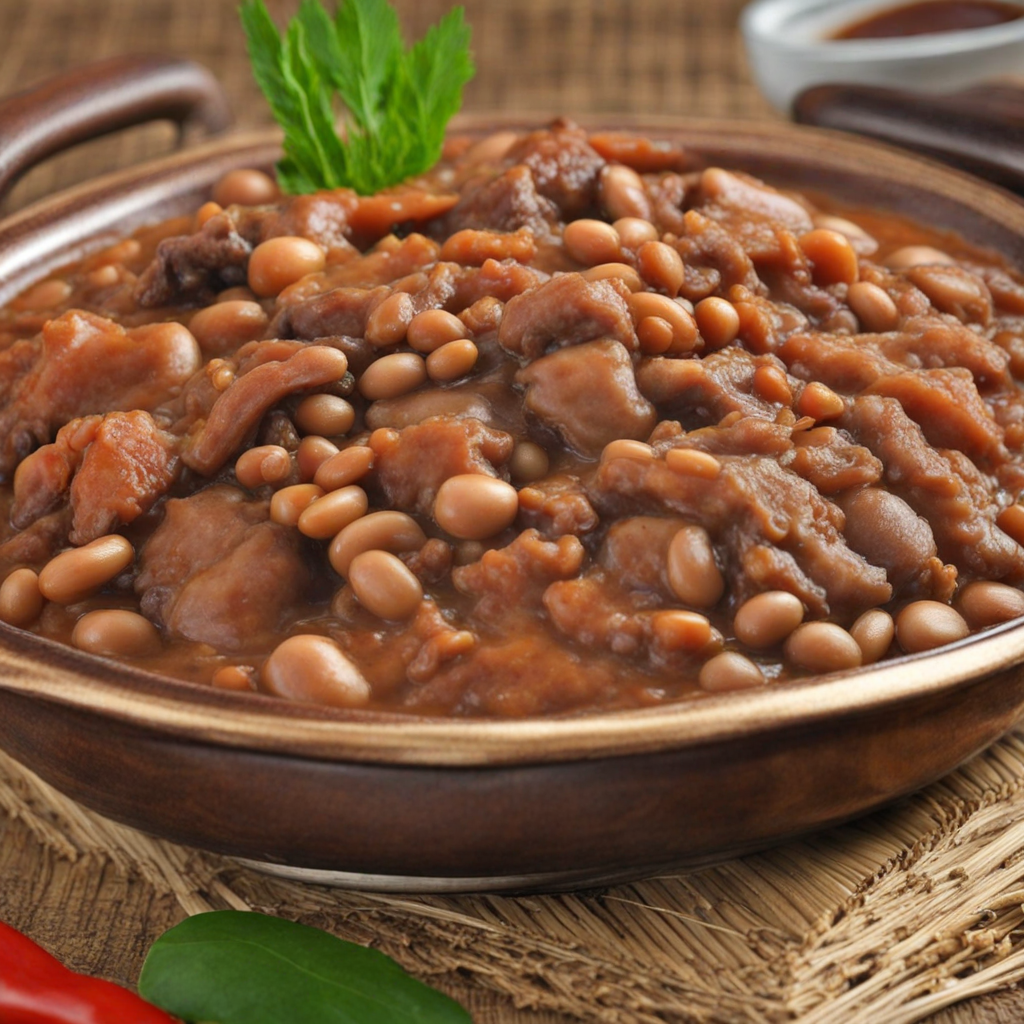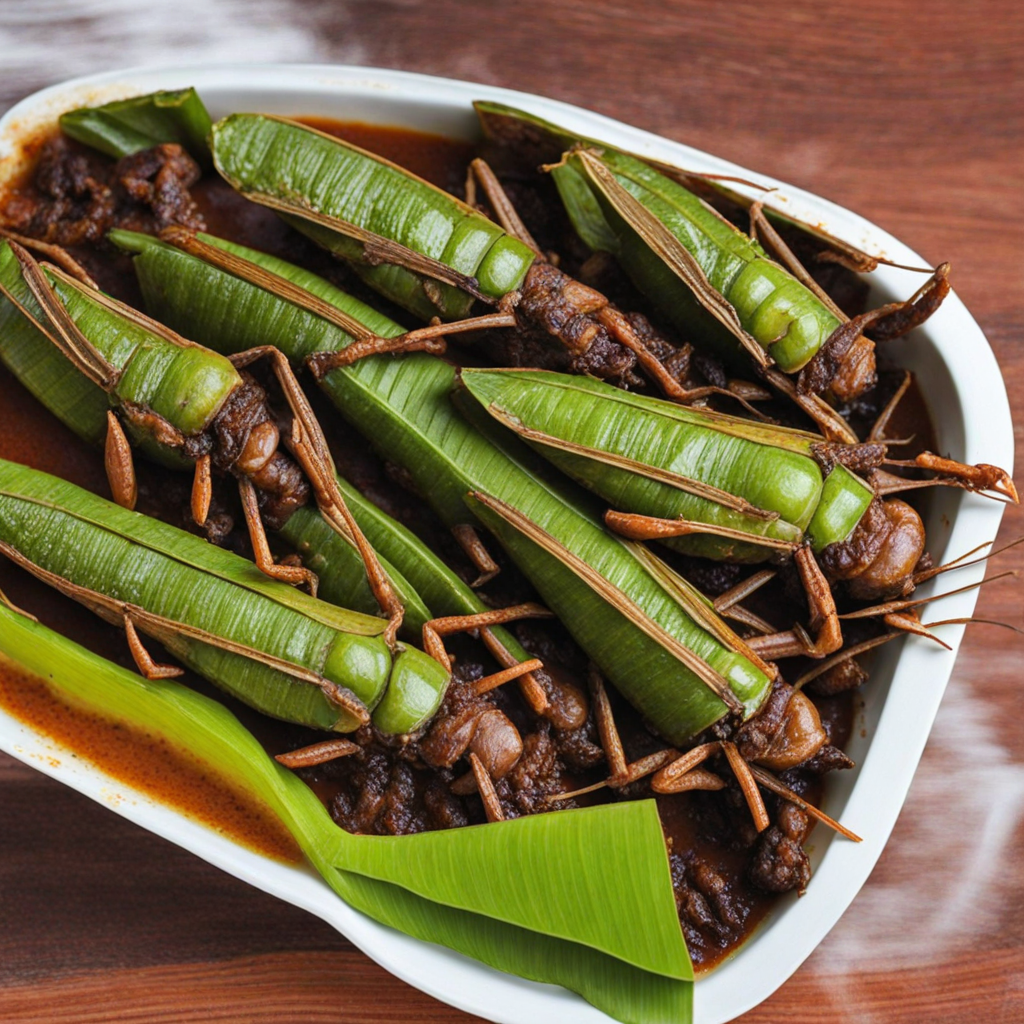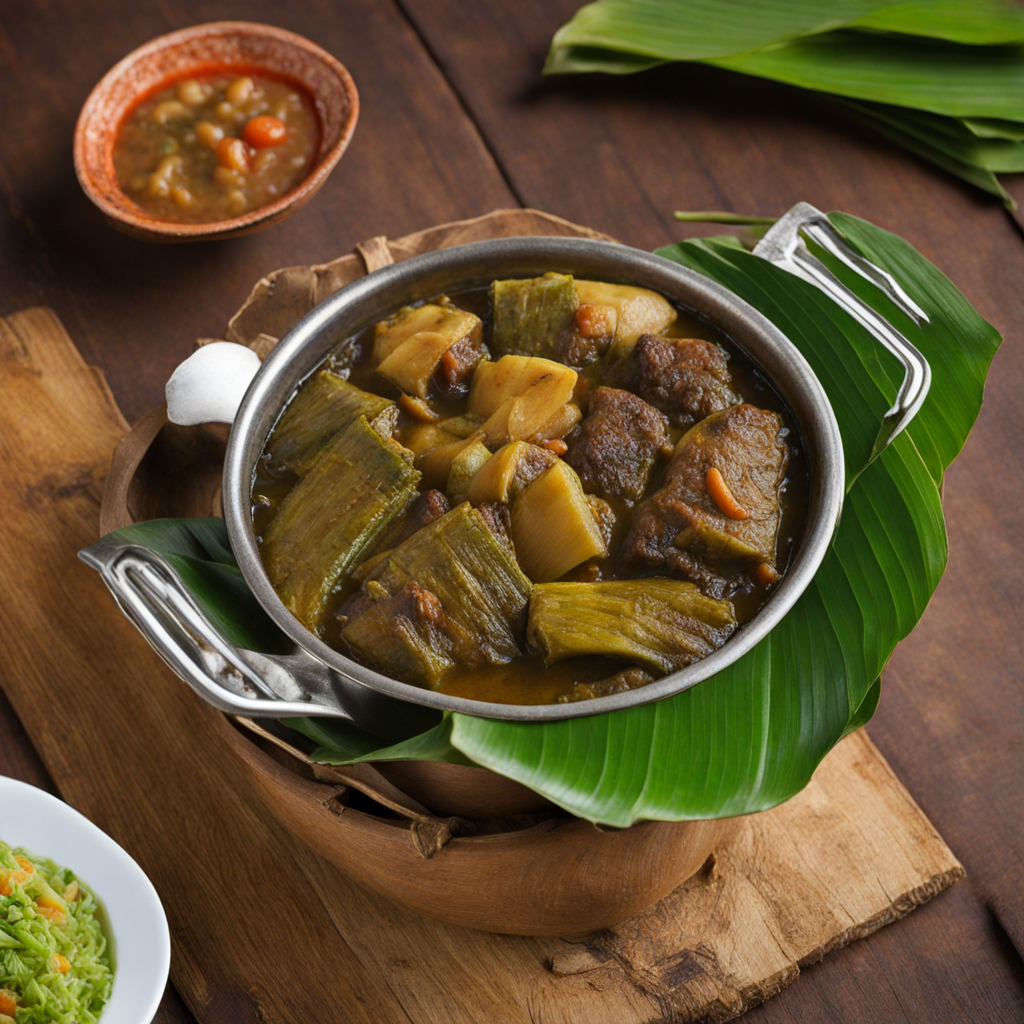Pumpkin Cake
Pumpkin Cake from Uganda is a delightful fusion of flavors that embodies the essence of East African culinary tradition. This moist and dense cake is made primarily from ripe pumpkin, which lends a natural sweetness and a vibrant orange hue. The pumpkin is often pureed and combined with a blend of warm spices such as cinnamon, nutmeg, and cloves, creating a comforting aroma that wafts through the kitchen. The addition of flour, sugar, and eggs gives the cake its structure, while a touch of vanilla enhances the overall flavor profile, making each bite a harmonious balance of sweetness and spice. The texture of Ugandan Pumpkin Cake is remarkably tender, with a slightly crumbly exterior that gives way to a rich, soft interior. Sometimes, the cake is enriched with nuts or dried fruits, adding a delightful crunch and bursts of flavor. It is often served during special occasions or family gatherings, where it is enjoyed alongside a cup of tea or coffee, making it a perfect treat for socializing. The cake may also be topped with a light glaze or cream cheese frosting, which complements the pumpkin's earthiness and adds a creamy finish to the dessert. What makes this cake truly special is its versatility; it can be enjoyed warm, at room temperature, or even chilled. Each bite offers a unique taste experience, blending the natural sweetness of pumpkin with the aromatic spices typical of Ugandan cuisine. As you savor the flavors, you may find hints of the country’s rich agricultural heritage, where pumpkins are a staple ingredient. Pumpkin Cake is not just a dessert; it’s a celebration of culture, warmth, and the joy of sharing food with loved ones.
How It Became This Dish
Kipapate ya Boga: A Culinary Journey through Uganda’s Rich Heritage #### Origins: A Taste of Tradition Kipapate ya Boga, often referred to simply as Kipapate, is a beloved dish from Uganda that embodies the essence of East African cuisine. The name translates to "meat pie" in the local Luganda language, though the dish is more complex than a mere pie. Its roots can be traced back to the diverse culinary practices of the various ethnic groups within Uganda, each contributing their own unique ingredients and cooking techniques to the dish. The origins of Kipapate are deeply intertwined with the agricultural practices of the region. Uganda is often called the "Pearl of Africa" due to its fertile lands and abundant natural resources. The major ingredients in Kipapate—meat, vegetables, and spices—can be sourced from local farms, showcasing the country's agricultural wealth. Traditionally, Kipapate was made with goat meat, which is a staple in Ugandan cuisine, although beef and chicken are also common variations. #### Cultural Significance: A Dish for the People Kipapate is more than just a dish; it is a cultural symbol that reflects the communal nature of Ugandan society. Food in Uganda is often a communal affair, with meals shared among family and friends. Kipapate is typically prepared for special occasions such as weddings, festivals, and family gatherings. It serves as a centerpiece, bringing people together around the table to share stories, laughter, and memories. The preparation of Kipapate is often a social event in itself. Families gather to cook together, with each member playing a role—whether it’s marinating the meat, chopping vegetables, or preparing the pastry. This communal cooking experience fosters connections among family members and reinforces the importance of togetherness in Ugandan culture. Moreover, Kipapate has become a symbol of hospitality in Uganda. Offering Kipapate to guests is a gesture of warmth and generosity, signifying respect and appreciation for their presence. It is not uncommon for hosts to go to great lengths to prepare an exceptional Kipapate, ensuring that their guests leave with full bellies and happy hearts. #### Development Over Time: Evolution of a Classic As Uganda has evolved, so too has Kipapate. The dish has adapted to changing tastes and influences, incorporating different ingredients and styles of preparation. In urban areas, especially in Kampala, Kipapate has taken on a modern twist, with street vendors and restaurants offering their own unique versions. Some variations include the addition of cheese, vegetables like carrots and peas, and even spices that reflect the multicultural influences present in Uganda today. The globalization of food has also played a role in the evolution of Kipapate. With the rise of the internet and social media, culinary enthusiasts have been sharing their own recipes and adaptations, leading to a cross-pollination of ideas. This has not only preserved the traditional aspects of Kipapate but has also allowed for innovation and creativity in its preparation. In recent years, there has been a renewed interest in traditional Ugandan cuisine, driven by a growing appreciation for local foods and flavors. Chefs and home cooks alike are exploring the rich culinary heritage of Uganda, showcasing dishes like Kipapate at food festivals and cultural events. This resurgence has encouraged younger generations to learn about their culinary roots, ensuring that the legacy of Kipapate continues. #### Ingredients and Preparation: The Heart of Kipapate The preparation of Kipapate is both an art and a science, requiring skill and patience. The core ingredients include meat (usually goat, beef, or chicken), onions, garlic, and a blend of spices such as black pepper, coriander, and chili. The pastry is typically made from wheat flour, water, and a pinch of salt, yielding a tender and flaky crust that encases the flavorful filling. To make Kipapate, the meat is first marinated with spices and then sautéed with onions and garlic until tender. This mixture is allowed to cool before being wrapped in the prepared pastry dough. The pies are then baked until golden brown, resulting in a deliciously crispy exterior that contrasts beautifully with the savory filling. Kipapate can be served as a standalone dish or accompanied by sides such as Ugandan matoke (steamed green bananas) or a fresh vegetable salad. The versatility of Kipapate allows it to be enjoyed at any time of the day—whether as a hearty breakfast, a satisfying lunch, or a delightful dinner. #### Modern-Day Kipapate: A Culinary Ambassador Today, Kipapate is not just a dish enjoyed in Uganda; it has become a culinary ambassador for Ugandan culture around the world. As the Ugandan diaspora has spread across the globe, so too has the love for Kipapate. Communities have established restaurants and food stalls that serve authentic Ugandan cuisine, allowing people from different backgrounds to experience this flavorful dish. Moreover, Kipapate has found its way into the hearts of food enthusiasts beyond Uganda’s borders. Cooking classes, food blogs, and social media platforms have contributed to its popularity, with chefs and home cooks sharing their versions and interpretations. This cross-cultural exchange has enriched the understanding of Ugandan cuisine and has brought Kipapate to new audiences. #### Conclusion: A Dish that Tells a Story Kipapate ya Boga is more than just a meat pie; it is a dish that tells the story of Uganda—its land, its people, and its traditions. From its humble beginnings as a staple food for celebrations to its modern-day interpretations that reflect global influences, Kipapate has remained a symbol of hospitality and community. As it continues to evolve, Kipapate serves as a reminder of the importance of food in bringing people together, preserving cultural heritage, and fostering connections across generations. Whether enjoyed at a family gathering or a street food stall in Kampala, Kipapate is a delicious testament to the rich culinary tapestry of Uganda, inviting all who taste it to partake in its history and warmth.
You may like
Discover local flavors from Uganda







